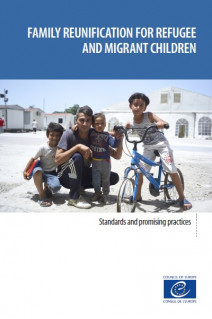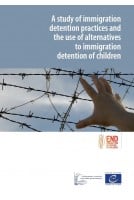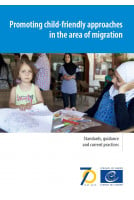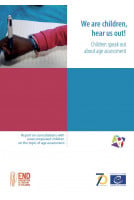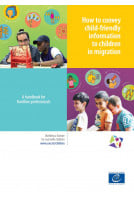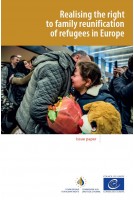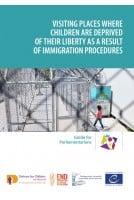A practical guide to assist legislators and legal practitioners in facilitating the reunification of refugee and migrant children with their families
As a result of the sharp increase in the refugee and migrant population in recent years, many children and their families have experienced family separation. Member states are bound by various obligations related to family reunification, and the practical reunification of refugee and migrant children with their family members has proved complex. This handbook is a practical guide both to key legal standards and to promising practices in the field of family reunification and restoring family links.
This publication is conceived as a point of reference for capacity-building material, technical assistance, co-operation projects and new practices for and with relevant authorities and institutions. It focuses on the reunification of families with children in the context of international migration, and in particular on reunification possibilities for unaccompanied and separated refugee and migrant children. It presents an overview of legal principles of human rights, children’s rights, refugee law and EU law relevant to family reunification and then discusses key features of family reunification procedures, with promising examples of law and practice and relevant applicable standards.
The handbook contributes to achieving the objectives of the Action Plan on Protecting Refugee and Migrant Children in Europe (2017-2019).
ABOUT THE AUTHORS ACKNOWLEDGEMENTS LIST OF ACRONYMS INTRODUCTION
Scope of the handbook
Methodology
Structure of the handbook
KEY FINDINGS DEFINITIONS PART I – RELEVANT LEGAL PRINCIPLES AND PROVISIONS CONCERNING FAMILY LIFE AND FAMILY REUNIFICATION CHAPTER 1. FAMILY REUNIFICATION IN HUMAN RIGHTS LAW
1.1. State obligations relating to the right to family life
1.2. Definition of the family
CHAPTER 2. FAMILY REUNIFICATION IN INTERNATIONAL REFUGEE LAW AND IN THE UNITED NATIONS GLOBAL COMPACTS CHAPTER 3. FAMILY REUNIFICATION IN EU LAW
3.1. Charter of Fundamental Rights
3.2. EU Family Reunification Directive
3.3. EU Dublin Regulation
3.4. Other EU legal texts
CHAPTER 4. CROSS-CUTTING PRINCIPLES CONCERNING REFUGEE AND MIGRANT CHILDREN
4.1. General legal principles
4.2. Specific guidance on family reunification involving children
4.3. Procedural principles
PART II – PROMISING EXAMPLES OF PRACTICE AND LAW CHAPTER 5. SCOPE OF THE APPLICATION FOR FAMILY REUNIFICATION
5.1. Definition of the beneficiary
5.2. Definition of the sponsor: the distinction between refugees and beneficiaries of subsidiary protection
CHAPTER 6. REQUIREMENTS FOR FAMILY REUNIFICATION APPLICATIONS
6.1. Substantive requirements
6.2. Procedural requirements
CHAPTER 7. PROCEDURAL SAFEGUARDS IN FAMILY REUNIFICATION PROCEDURES
7.1. Information provision in an age, gender and culturally appropriate manner
7.2. Legal counselling, advice and legal aid to access family reunification
CHAPTER 8. SUPPORT TO OVERCOME PRACTICAL BARRIERS IN THE PROCESS OF FAMILY REUNIFICATION CHAPTER 9. SPECIFIC SAFEGUARDS FOR UNACCOMPANIED AND SEPARATED CHILDREN
9.1. The best interests of the child in family reunification
9.2. The role of national guardianship systems in realising children’s right to family life
CHAPTER 10. SUPPORT TO INTEGRATION AND TO LIVING REUNITED CHAPTER 11. CO-OPERATION APPENDIX: OVERVIEW OF MOST RELEVANT PROVISIONS ON FAMILY REUNIFICATION
Relevant legal instruments
